Mint should be cut back and pruned in winter to remove any dead leaves and stems and keep it looking neat. This will also encourage lots of new growth in the Spring when the weather warms. In Winter the mint will go dormant and the leaves and stems will turn black.
The healthy root system will stay protected under the soil ready to grow new stems and leaves when the weather warms.
While it may look like the mint plant has died over winter, it will be safely saving its roots under the soil to grow back large and healthy in the warmer weather.
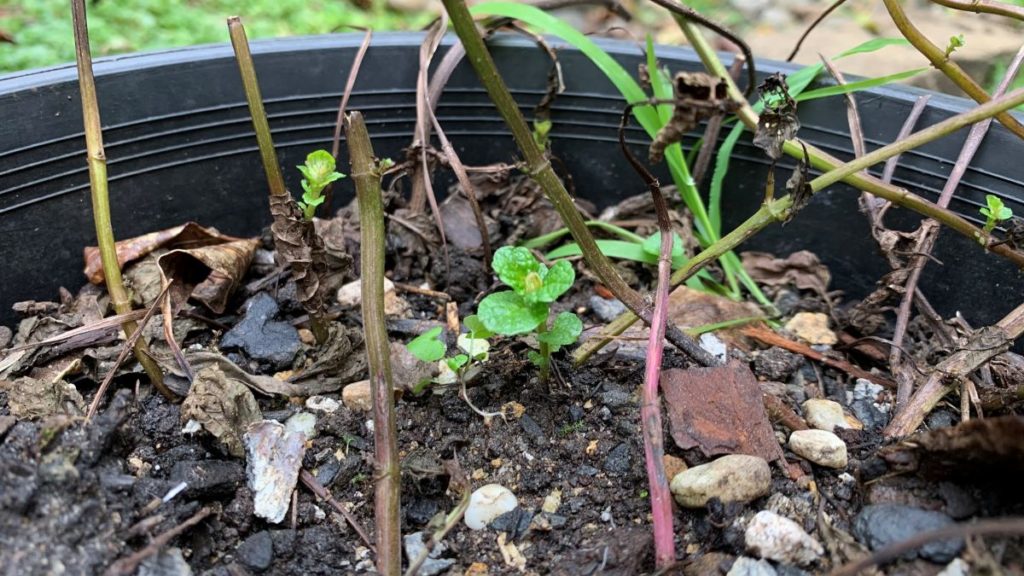
How to cut back mint in winter
Cut the mint back to 2 inches from the ground to tidy up a scraggly looking mint plant. While in winter mint can seem to disappear in the garden in Spring it will grow new stems from the healthy, white roots under the soil.
Mint can be dug up and transplanted in the cooler months. Individual pieces of root can be taken and turned into new plants and placed in potting soil to re-sprout. I moved pieces of root and placed them in my front garden bed and they grew back in Spring.
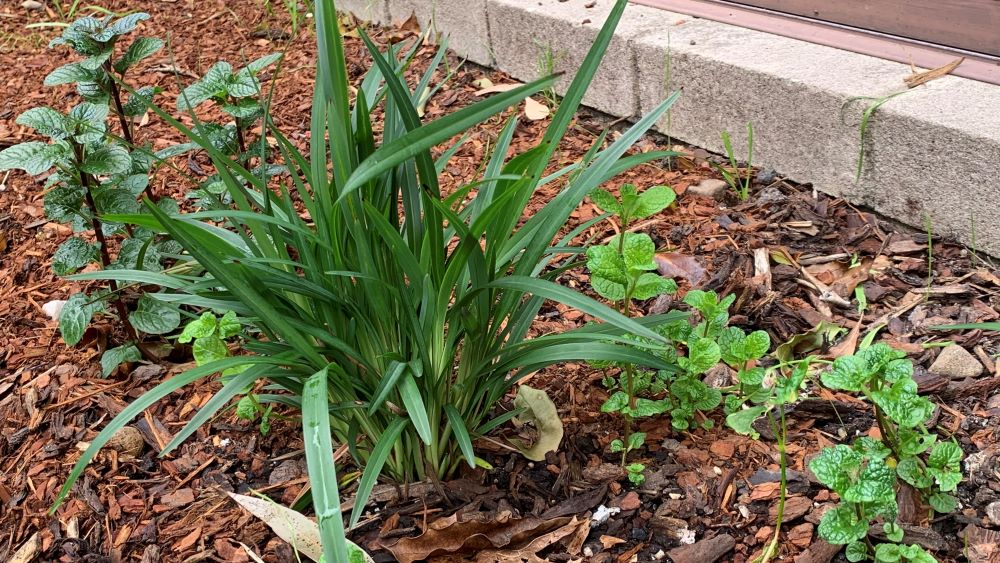
How to care for mint after pruning in winter
There are a few easy stems to follow after you cut back your mint plant to keep it healthy and prepare it for Spring.
1. Get rid of the old stems
After cutting back mint it might be tempting to put the old stems in your compost bin. While this can be done there is actually a risk that the stems can grow back and take over your bin. Healthy stems, particularly those with some root system left on can sprout again in soil.
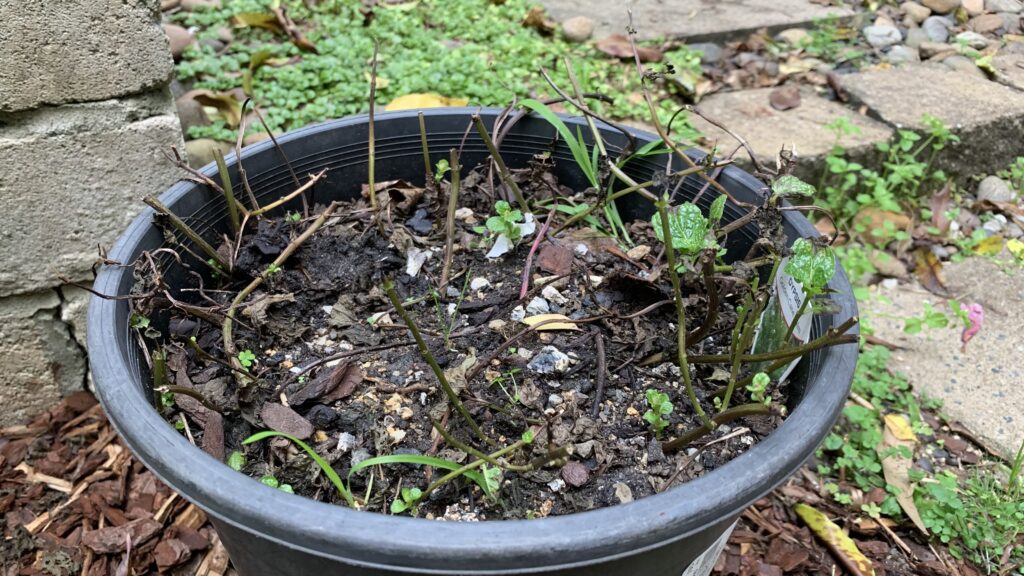
2. Fertilize in spring
Once the plant has been cut back to short stems of 2 inches above the ground the plant can be fertilized once the weather warms up. When you see new leaves pop through the soil, throw on a handful of pelleted chicken manure to encourage lots of leaf growth.
A liquid nitrogen fertilizer like fish emulsion can also be added to the mint to give it an extra boost and feed soil bacteria to help break down the nutrients. Healthy soil will give you healthy mint plants so take care of it with some mulch and a dose of seaweed solution.
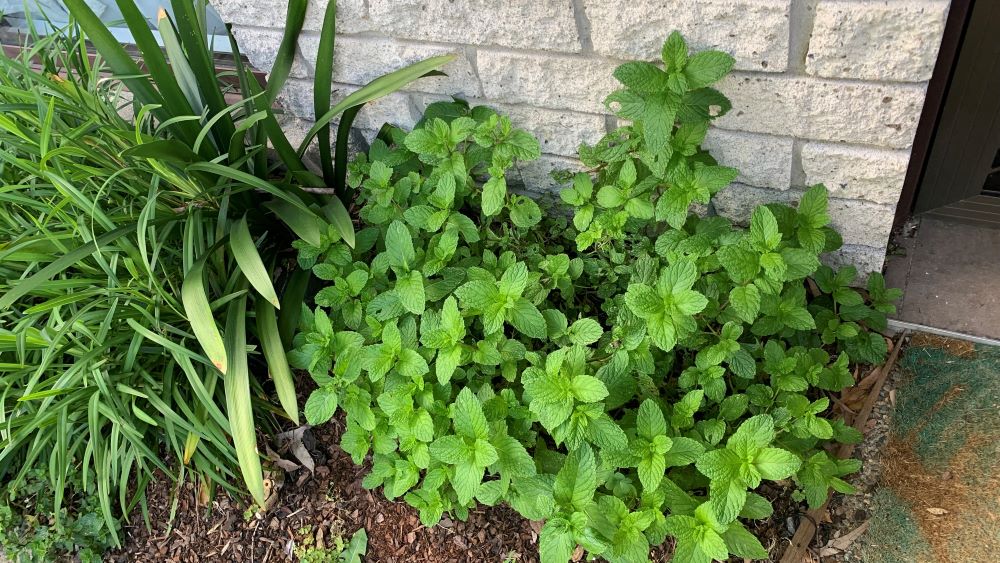
Check out these easy tips to keep mint growing well over winter.
3. Mulch around the plant
After pruning, mint plants can be left uncovered. If you notice winter weeds or if you see the stems start to grow through with new leaves add some mulch around the plant. This will reduce weed competition and keep the soil moist for longer.
I like to use bark mulch around my mint planted in garden beds but straw mulch and sugar cane mulch will work well too. For mint planted in pots you may find that you don’t need mulch as the plant will quickly fill the pot and grow leaves smothering out any weed competition.
What do you do with mint plants in the winter?
Mint plants in the winter will need to be cut back to prepare them for new growth in Spring. Wait until the stems have turned brown and dry and the leaves have turned brown and crispy.
This will mean that the mint has gone dormant for the winter and it can be cut back to keep it looking neat. This will also encourage new stem growth from underground roots and give you a fuller, bushy mint plant in Spring and over Summer.
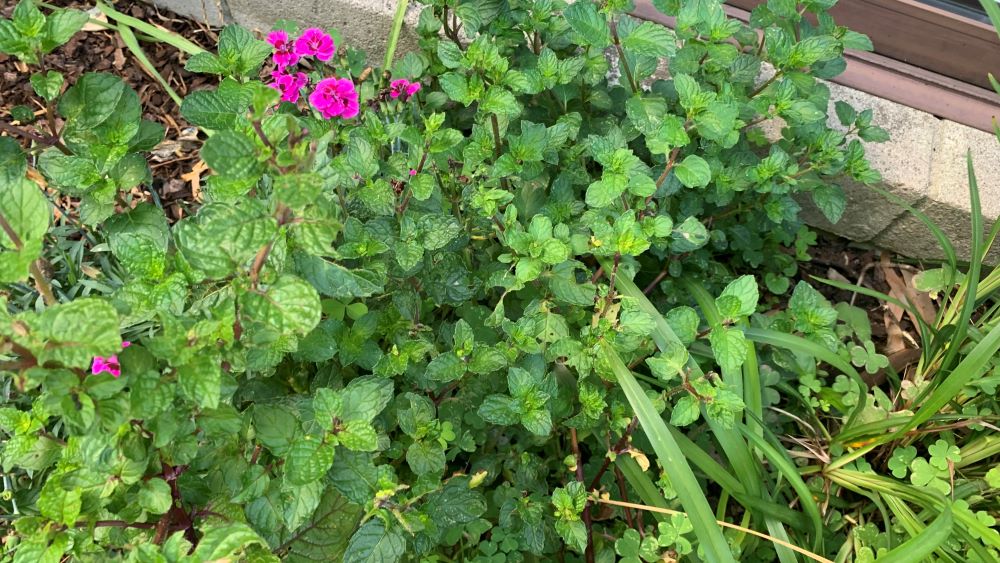
Keep the mint plant well-watered even in the cooler months. If you are getting plenty of winter rain you can slow down watering. Once the weather starts to warm up, water the mint regularly for faster growth and more leaves.
Mint plants will not need fertilizer over winter as they will be in a dormant state. Instead, leave them alone until spring and then add pelleted chicken manure. This will slowly release over the warmer months and can be added every 4 weeks over the growing season.
How do you prepare mint for winter?
To prepare mint for winter trim back any healthy leaves and take them inside for your cooking. Once mint goes dormant in the winter you will not get any new leaves so enjoy the last ones before the weather cools.
Once the mint starts to turn brown and crispy and the stems blacken the plant can be cut back almost to the ground to tidy it up. Keep an eye on potted mint to make sure it doesn’t dry out completely, even in winter when it is dormant.
You can lift and split the plant or repot it into a larger pot in late fall to prepare it for new Spring growth. Plant the mint out in good quality potting soil and water it in well. You will have a new healthy mint plant in the next few months.

How do you trim mint so it keeps growing?
Over the warmer seasons of Spring and Summer mint can be trimmed lightly and regularly to keep it growing and looking dense and bushy.
Using garden secateurs or scissors, trim off the top 2-3 inches of the mint plant even if you do not intend to use the leaves. This will encourage more leaf growth and you will have double the amount of leaves fast.
You can also trim back longer stems for your cooking or place them in a glass of water and they will grow roots. These cuttings can be planted out in potting soil to grow new mint plants.
Water the mint regularly to keep them growing and add a liquid feed of a nitrogen fertilizer every 2 weeks. This will give you rapid leaf and stem growth and give you a ton of mint.

Should mint be cut back in winter? | Summary
Mint should be cut back in winter to keep it looking neat and tidy and to encourage new leaf and stem growth. Mint plants that are cut back regularly in the warmer months will also grow better as they will send up multiple new stems where the cut was made.
To prepare you mint for a huge crop over summer, cut it back in winter and allow it to stay dormant until the Spring comes. Feed and water your mint in Spring and you will have more mint than you can possibly eat.
Happy growing.
I am an accredited practicing dietitian, experienced gardener and a dedicated cook. I love writing and sharing my experience so you can learn from my successes and mistakes.
